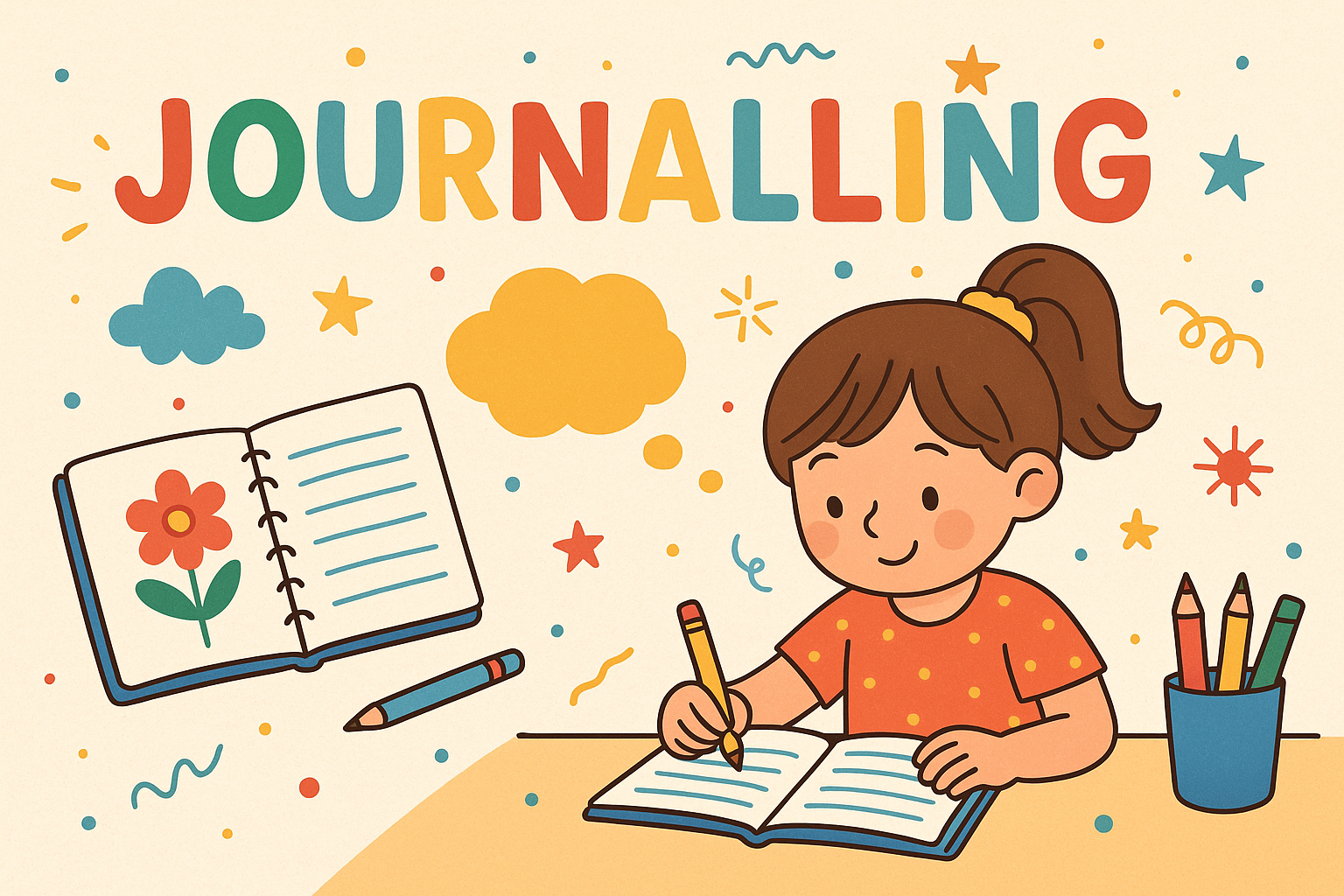Journalling gives children a quiet, private space to reflect on their day, write down their thoughts, and explore their feelings.
Whether it’s simple drawings, a few sentences, or a longer story, journalling helps children build emotional awareness, writing confidence, and a sense of routine.
There’s no right or wrong way to do it — some children enjoy writing every day, while others may dip in whenever they feel like it. With gentle encouragement, journalling can become a lovely mindful habit that grows with your child over time.
Materials Needed
- Notebook, journal, or blank paper
- Pen, pencil, crayons, or coloured pens
- Optional: stickers, washi tape, or stamps for decoration
Tools Needed
- None
Steps
- Choose a Journal
Pick a notebook or folder that your child enjoys using — let them decorate it if they like! - Pick a Prompt
If they need help getting started, offer a simple question (see ideas below). - Encourage Expression
Let your child write, draw, or even stick in photos or small mementos. - Make it a Routine
Set aside a regular time, like before bed or after school, to reflect and write. - Keep it Private (if they wish)
Let your child choose whether they share their journal or keep it for themselves.
Journal Prompt Ideas
- What was the best part of your day?
- What made you smile today?
- What’s something you’re looking forward to?
- Draw a picture of how you feel right now.
- What’s one thing you learned today?
- If you could go anywhere in the world, where would you go?
- Write about your favourite hobby or game.
- Describe someone who makes you feel safe.
- Write down one thing you’re grateful for.
Variations
- Gratitude Journal: Write or draw one thing each day they feel thankful for.
- Drawing Journal: Younger children can draw pictures instead of writing words.
- Travel Journal: Write entries about trips, days out, or special activities.
- Sticker Prompts: Use themed stickers as inspiration for that day’s entry.



